Birth name Lajos Tiza Debut 1932 Billed from St. Louis Billed weight 225 lb (102 kg) Retired 1990 | Billed height 6 ft 2 in (1.88 m) Role Professional wrestler Ring name(s) Lou Thesz Name Lou Thesz | |
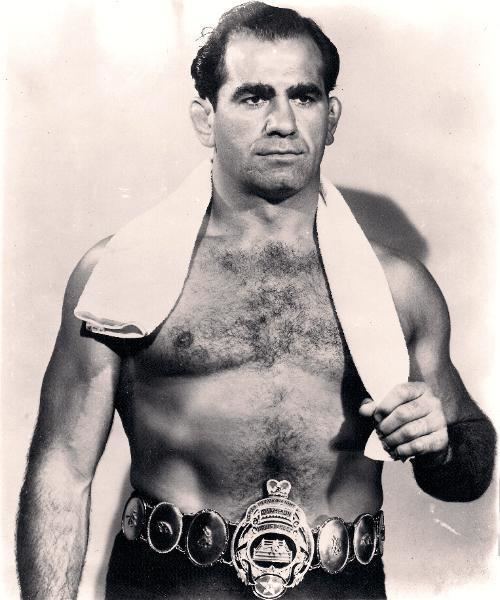 | ||
Born April 24, 1916
Banat, Michigan ( 1916-04-24 ) Died April 28, 2002, Orlando, Florida, United States Trained by Peter Sauer, Ad Santel, Ed Lewis, Warren Bockwinkel Similar People Buddy Rogers, Verne Gagne, Karl Gotch, Bruno Sammartino, Nick Bockwinkel | ||
Icons of wrestling lou thesz
Aloysius Martin Thesz (April 24, 1916 – April 28, 2002) was an American professional wrestler.
Contents
- Icons of wrestling lou thesz
- Jerry lawler sam bass lou thesz vs eddie marlin tommy gilbert rick gibson 5 6 74
- Professional wrestling career
- Personal life
- Later life and death
- In wrestling
- Championships and accomplishments
- Notes
- References
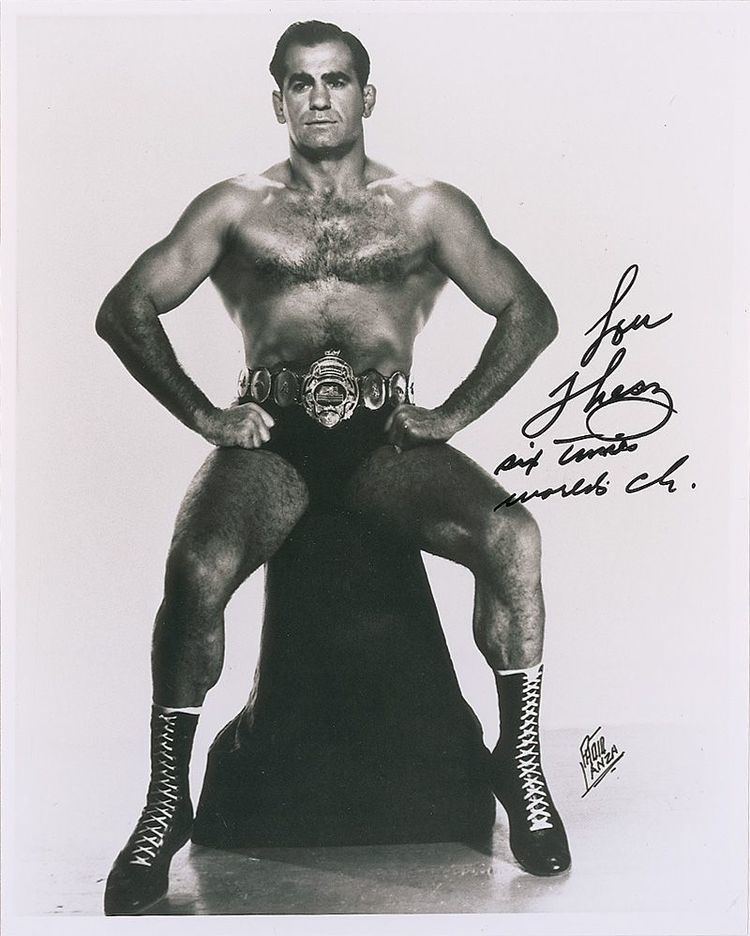
A fourteen-time world champion, he held the NWA World Heavyweight Championship three times for a combined total of 10 years, three months and nine days (3,749 days) – longer than anyone else in history. Thesz is widely regarded as one of the greatest wrestlers of all time. Among his many accomplishments, he is credited with inventing a number of professional wrestling moves and holds such as the belly to back waistlock suplex (later known as the German suplex due to its association with Karl Gotch), the Lou Thesz press, stepover toehold facelock (STF), and the original powerbomb.
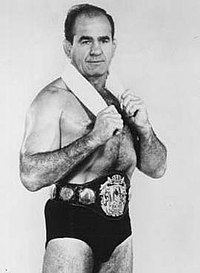
Jerry lawler sam bass lou thesz vs eddie marlin tommy gilbert rick gibson 5 6 74
Professional wrestling career
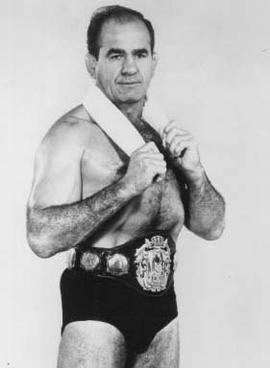
Born in Banat, Michigan in 1916, Thesz's family moved to St. Louis when he was a young boy. His working-class immigrant parents hailed from the Austro-Hungarian Empire. Beginning in Thesz's early youth, his father personally gave him a tough and thorough education in Greco-Roman wrestling, which provided the fundamentals for his later success. While in high school, he was a successful freestyle wrestling competitor on his school team; as he recalled many years later, he and a friend once "worked" a dramatic match against each other at a tournament, and were amused when nobody could see how much they were faking. As a teenager, he also trained in amateur wrestling with legendary wrestler Ad Santel. Thesz made his professional wrestling debut in 1932, at the age of 16. He soon met Ed "Strangler" Lewis, the biggest wrestling star of the 1920s, who taught a young Lou the art of "hooking" (the ability to stretch your opponent with painful holds), and the two formed a lasting friendship. By 1937, Thesz had become one of the biggest stars in the St. Louis territory, and on December 29 he defeated Everett Marshall for the American Wrestling Association World Heavyweight Championship, the first of many world heavyweight titles, which also made Thesz became the youngest world heavyweight champion in history, at the age of 21. Thesz dropped the title to Steve "Crusher" Casey in Boston six weeks later. He won the National Wrestling Association World Heavyweight Championship in 1939, once again defeating Marshall, and again in 1948, defeating Bill Longson.
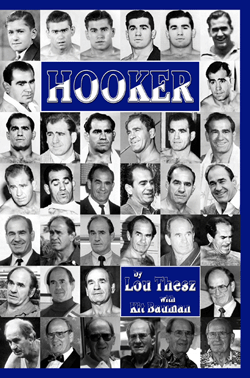
In 1948, the National Wrestling Alliance (NWA) was formed, the purpose being to create one world champion for all the various wrestling territories throughout North America. Orville Brown, the reigning Midwest World Heavyweight Championship holder, was named the first champion. Thesz, at the time, was head of a promotional combine that included fellow wrestling champions Longson, Bobby Managoff, Canadian promoter Frank Tunney and Eddie Quinn, who promoted in the St. Louis territory where NWA promoter Sam Muchnick was running opposition. Quinn and Muchnick ended their promotional war, and Thesz' promotion was absorbed into the NWA. Part of the deal was a title unification match between Brown and Thesz, who held the National Wrestling Association's World Heavyweight Championship. Unfortunately, just weeks before the scheduled bout, Brown was involved in an automobile accident that ended his career, and he was forced to vacate the championship and the NWA awarded the title to the No. 1 contender, Thesz. Thesz was chosen for his skill as a "hooker" to prevent double crosses by would-be shooters who would deviate from the planned finish for personal glory.
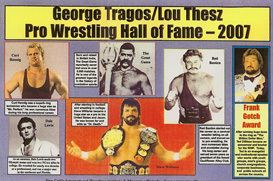
Between 1949 and 1956, Thesz set out to unify all the existing world titles into the National Wrestling Alliance World Heavyweight Championship. In 1952, he defeated Baron Michele Leone in Los Angeles for the California World Heavyweight title and became the closest any wrestler had been to being undisputed world heavyweight wrestling champion since Danno O'Mahony in 1936. Thesz finally dropped the title to Whipper Billy Watson in 1956, and took several months off to recuperate from an ankle injury. He regained the title from Watson seven months later.
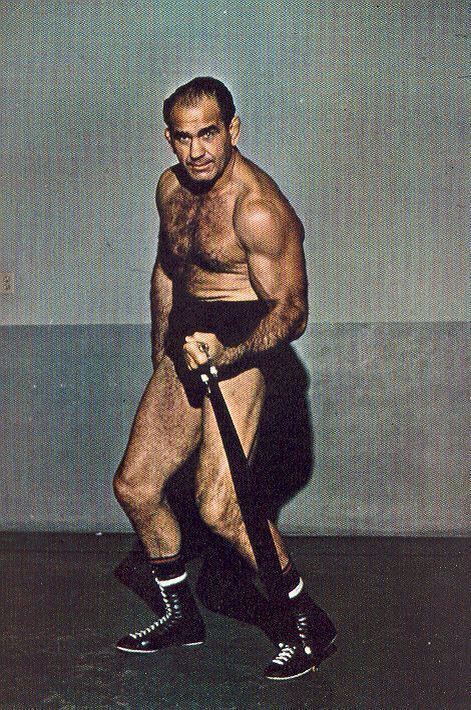
1957 was an important year for Thesz; on June 14, the first taint to Thesz' claim of undisputed champion occurred in a match with gymnast-turned-wrestling star, Edouard Carpentier. The match was tied at two falls apiece when Thesz claimed a legitimate back injury and forfeit the last fall, thus Carpentier was declared the winner; however, the NWA chose not to recognize the title change, deciding a championship could not change hands due to injury. Despite the NWA's decision, there were some promotions who continued to recognize Carpentier's claim to the NWA World Heavyweight Championship. That same year, Thesz became the first wrestler to defend the NWA World Heavyweight Championship in Japan, wrestling Rikidōzan in a series of 60 minute draws. Their bouts popularized professional wrestling in Japan, gaining the sport mainstream acceptance. Realizing he could make more money in the land of the rising sun, Thesz petitioned to the NWA promoters to regularly defend the championship belt in Japan, but his request was turned down, and Thesz asked to drop the title to his own hand picked champion, Dick Hutton, rather than Thesz's real-life rival and the more popular choice, Buddy Rogers. Thesz would embark on a tour of Europe and Japan, billing himself as the NWA International Heavyweight Champion; this title is still recognized as a part of All Japan Pro Wrestling's Triple Crown Heavyweight Championship.

In 1963, Thesz came out of semi-retirement to win his sixth world heavyweight championship from Buddy Rogers at the age of 46. He would hold the title until 1966 when, at the age of 49 when he lost it to Gene Kiniski.

Thesz wrestled on a part-time basis over the next 13 years, winning his last major title in 1978, in Mexico, becoming the inaugural Universal Wrestling Alliance Heavyweight Champion at the age of 62, before dropping the championship to El Canek a year later. Thesz officially retired in 1979, after a match with Luke Graham, but he remained retired for the most part, before wrestling his last match on December 26, 1990 in Hamamatsu, Japan at the age of 74, against his protégé, Masahiro Chono. This made him the only male professional wrestler to wrestle in seven different decades.
Personal life
Thesz was married three times. His first marriage to Evelyn Katherine Ernst in March 22, 1937. Thesz was convalescing from a severe knee injury suffered in 1939 and from 1941 to 1944 and worked as a dog breeder and trainer for Dogs for Defense and later as a supervisor for the Todd Houston Shipyard. He divorced his first wife in 1944 and at the shipyard, Thesz met his second wife, Fredda Huddleston Winter, with whom he fathered three children: Jeff Thesz, Robert Thesz and Patrick Thesz. Thesz was drafted into the army in 1944 despite a legitimate injury to his knee and multiple medical deferments. He was placed into medic training and eventually teaching hand-to-hand combat defense for medics and was discharged in 1946. Thesz's second marriage came to an end in 1975. He married Charlie Catherine Thesz and remained with her for the rest of his life.
Later life and death
After retiring, Thesz became a promoter, manager, color commentator, trainer and occasionally, a guest referee for important matches. Some of the better-known matches he refereed include the following:
In 1992, Thesz became the president of the Cauliflower Alley Club (CAC), an organization recognizing and supporting retired wrestlers and actors who enjoyed an association with wrestling. He served as CAC's president until 2000. He became a trainer for the Union of Wrestling Force International, and lent the promotion one of his old NWA championship belts, which they recognized as their own world title. As an announcer, Thesz was the color commentator for International World Class Championship Wrestling's weekly television show. In 1999, his name was given to the Lou Thesz/George Tragos Professional Wrestling Hall of Fame for professional wrestling stars with a successful amateur background at the International Wrestling Institute and Museum in Waterloo, Iowa, where he was an inaugural inductee. In October 1997, Thesz was honored by a ceremony at World Wrestling Federation's (WWF) Badd Blood as being both the youngest and oldest world heavyweight champion at ages 21 and 50, respectively (technically, Verne Gagne holds the record for oldest champ, when he held the AWA World Heavyweight Championship in 1980 at age 54, which was tied by WWF owner Vince McMahon in 1999; Thesz has since been supplanted as the oldest NWA World Heavyweight Champion by current champion Tim Storm (who was born on May 1, 1965), who won the title at age 51 by defeating Jax Dane on October 21, 2016).
Thesz lived in Virginia Beach, Virginia for much of his later life. He wrote an autobiography, Hooker. Undergoing triple bypass surgery for an aortic valve replacement on April 9, 2002, he died due to complications weeks later on April 28 in Orlando, Florida.
who would train Antonio Inoki and Giant Baba to model themselves like Thesz. There has never been another true undisputed world heavyweight champion since Thesz accomplished this feat by unifying all the major titles between the late 1940s and early 1950s. Thesz is strongly considered by many to be the greatest professional wrestler of the 20th Century. Upon Thesz' passing, he was described as a "God" in Japan and the "Babe Ruth" of professional wrestling in America and "perhaps the last pure wrestler to ever exist". In Japan, Thesz was called Tetsujin which means "Ironman" in respect for his speed, conditioning and vast array of amazing wrestling techniques. For a brief period, Thesz also trained Japanese Jumbo Tsuruta who would begin using some of the moves that Thesz innovated during his matches starting in the 1980s.
Thesz was the first wrestler to ever hold the NWA International Heavyweight Championship, which became a part of what is now the Triple Crown Heavyweight Championship under All Japan Pro Wrestling. Thesz was also the first UWA World Heavyweight Champion for the now defunct Universal Wrestling Association in Mexico, where he won the title after defeating Mil Máscaras on July 26, 1976. Thesz was the first ever TWWA World Heavyweight Champion for the now defunct International Wrestling Enterprise as well. Thesz and "The Outlaw" (Dory Funk Sr.) were the first ever NWA Pacific Coast (Vancouver) Tag Team Champions.
In 1999, a large group of professional wrestling experts, analysts and historians named Thesz the most influential NWA World Heavyweight Champion of all time. In 2002, Thesz was named the second greatest professional wrestler of all time behind Ric Flair in the magazine article "100 Wrestlers of All Time" by John Molinaro, edited by Dave Meltzer and Jeff Marek. Former NWA World Heavyweight Champion Jack Brisco named Thesz his all-time favorite professional wrestler by saying that "Lou Thesz was my idol. He was a great wrestler, a great example, a class man". The WWE tag team known as The Vaudevillains have named Thesz as one of their influences. WWE wrestler Cesaro named Thesz his "dream" tag team partner and said, "He [Thesz] personifies wrestling. He represents everything that I think it should be. He's a class act, and he was a workhorse for the company, while at the same time being a student of the game. He was completely legit. I would have loved a chance to go one-on-one with him or to work alongside him".
Thesz is an inaugural member of several professional wrestling halls of fame, including the Professional Wrestling Hall of Fame and Museum, Wrestling Observer Newsletter Hall of Fame, NWA Hall of Fame, WCW Hall of Fame, and the George Tragos/Lou Thesz Pro Wrestling Hall of Fame which is subsequently named after both one of his trainers along with Thesz himself. On April 2, 2016, Thesz was posthumously inducted into the WWE Hall of Fame as an inaugural member of the "Legacy" wing.
In wrestling
Championships and accomplishments
Notes
1 Records are unclear as to where Thesz first won the NWA World Heavyweight Championship and which promotion he was wrestling in when he won it.
2 The World Heavyweight Championship of the National Wrestling Association existed from 1929 through 1949, when it was unified with the used by the National Wrestling Alliance.
3 Thesz's reigns with the title occurred prior to the NWA assuming control of it. In fact, he won the title before the NWA was created.
4 Thesz's also has two reigns with the title before the formation of the NWA and the title being renamed the NWA World Heavyweight Championship.
